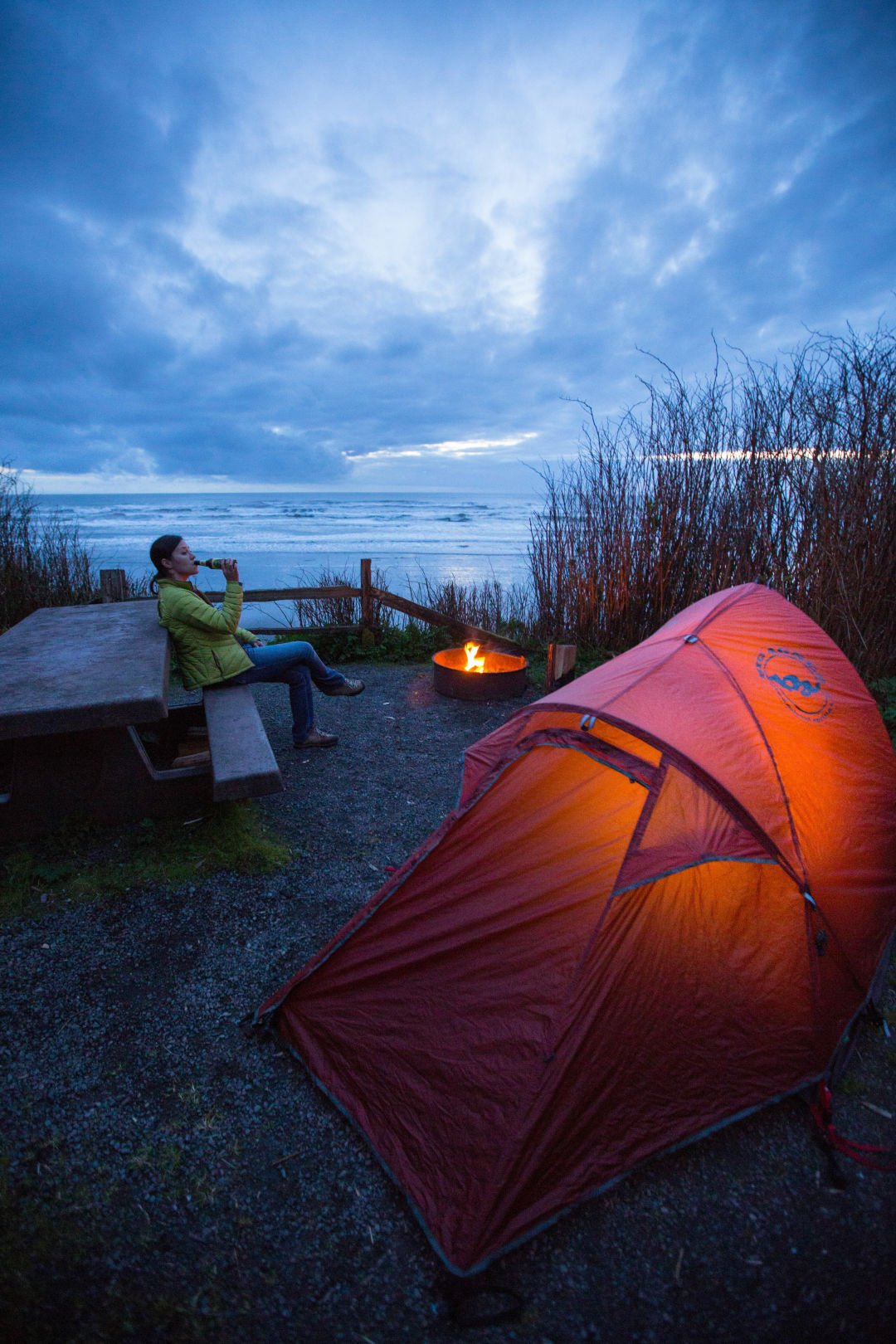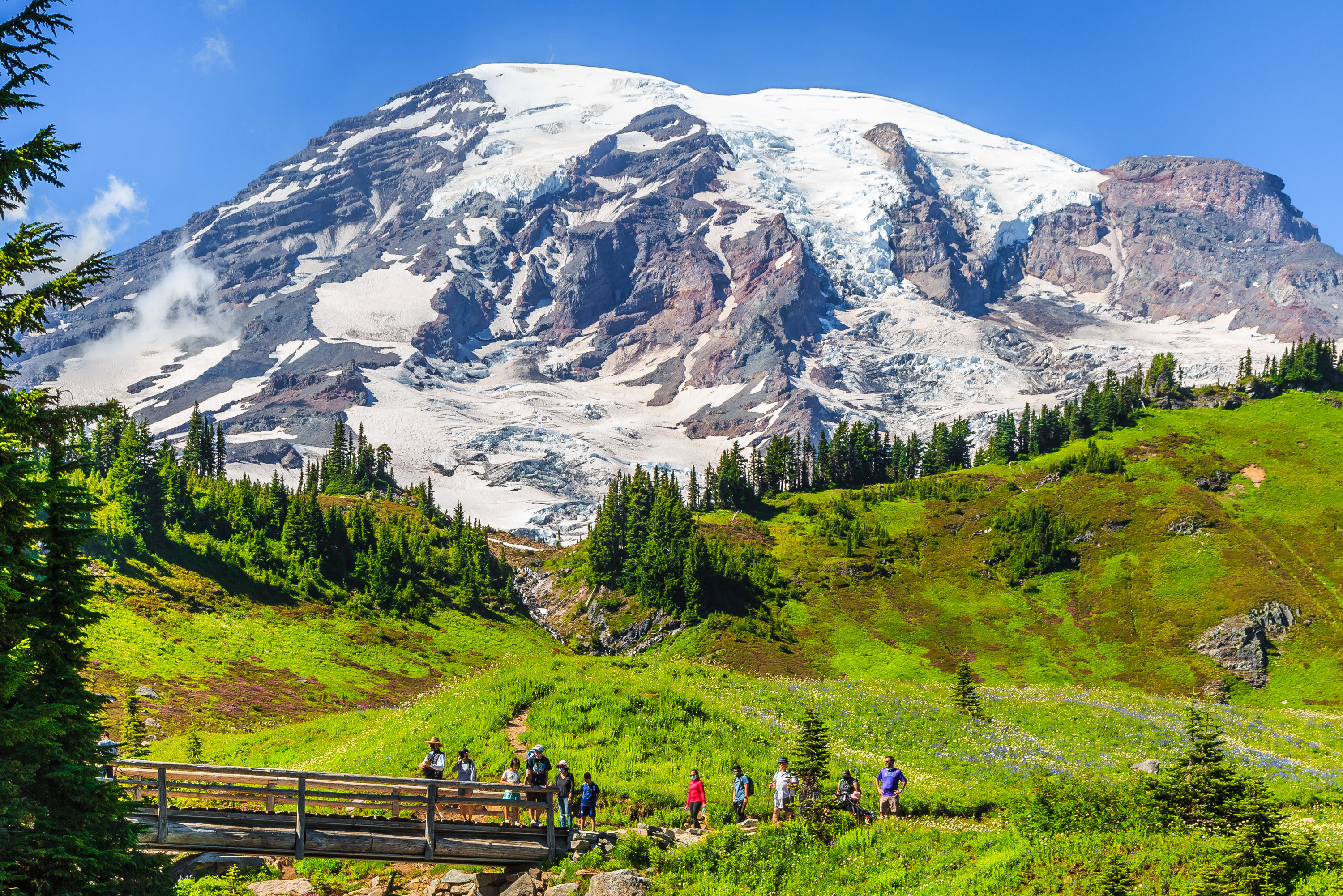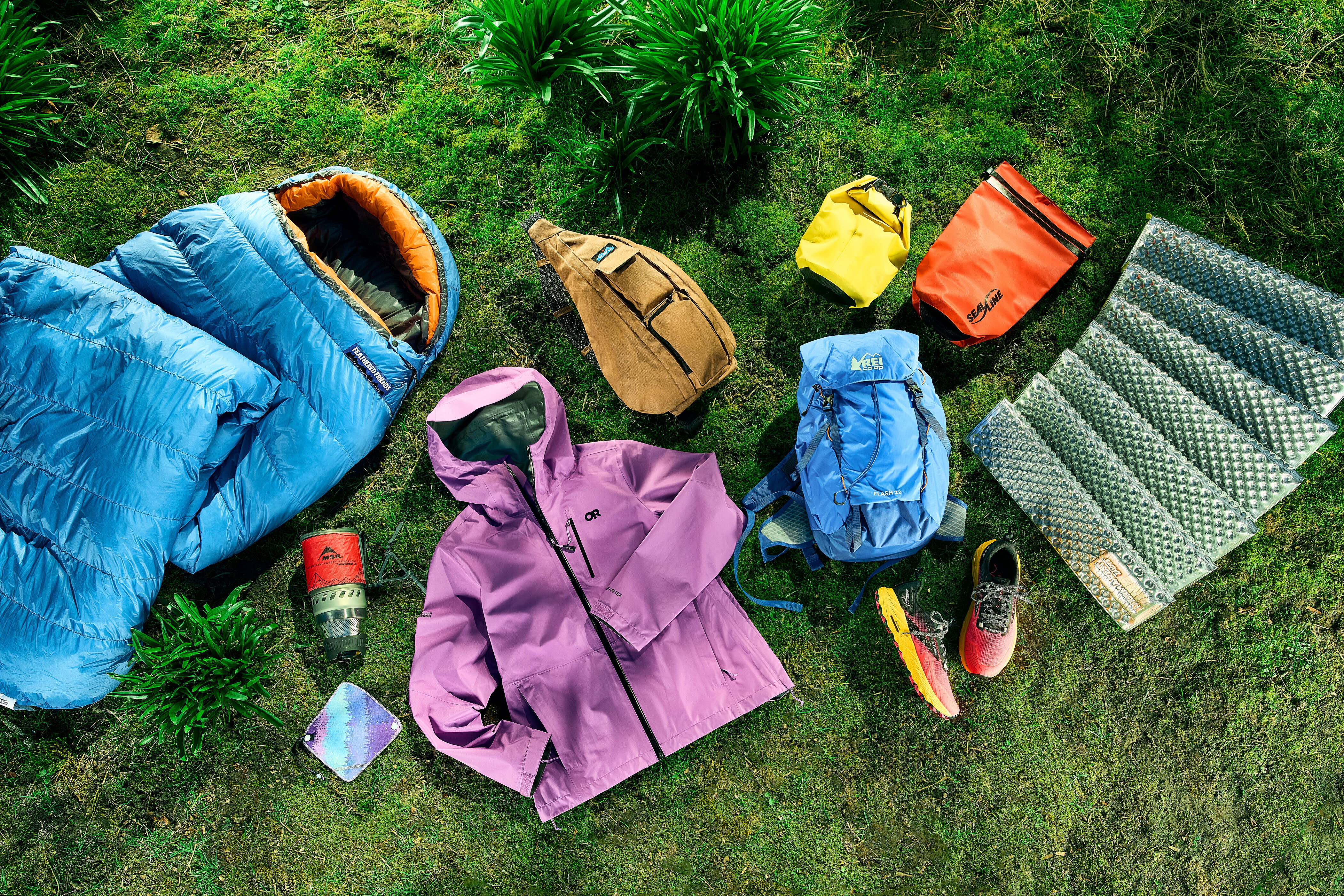Insider's Guide to Visiting Washington State's Olympic National Park

Driftwood lines Ruby Beach.
Image: Tandemstock by Justin Bailie
Jump to an Activity:
What to Do / Where to Hike / Where to Stay
We just say “the Olympics” when we talk about our rainy national park, a bumpy line of peaks we can see over the Sound. Named for the home of the Greek gods, Olympic National Park reigns as the fifth most visited national park in the country. It helps that the park is in pieces: one big, round blob encompassing the peaks and rain forest, then a sliver that runs a third of the length of Washington’s Pacific shore.
Visitors stream into the meadows of Hurricane Ridge, the sands of Kalaloch, and the forest canopies of Hoh—or all three. It took two Presidents Roosevelt to preserve the nearly one million acres of Olympic National Park. Today it cradles forest creatures you won’t find anywhere else, rare temperate rain forests where winters drown in up to 14 feet of rain, and the largest unmanaged elk herd in the world.
What to Do
Hurricane Ridge Visitor Center
In summer, films and exhibits inside the park’s most panoramic visitor center are a break from the jaw-dropping view outside of alpine meadows and a crescent of peaks. Come winter it’s a congenial scene of skiers and snowshoers from the local community.
Boating
Local legend claims the blue-green Lake Crescent just west of Port Angeles is bottomless. Rustic dirt roads line the north end of the lake, while Highway 101 skirts the south shore; there are boat launches at Storm King Ranger Station and Fairholme. Boaters have paddled from the sprawling Lake Crescent Lodge since 1916, which now sits next door to the educational Olympic Park Institute campus.

Kayaking on Lake Crescent.
Image: Shutterstock by Justek16
Soaking
In the middle of a rain forest, it’s rarely hot enough for a dip in lakes filled with snowmelt. But the mineral pools of the Sol Duc Valley get as hot as 104 degrees, filling perfectly round manmade pools. The Sol Duc Hot Springs Resort also has overnight accomodations. For a more natural dip, the Olympic Hot Springs are simple steaming pools in the dirt, surrounded only by a few boulders. While once a day hike from the Elwha area, dam removal road closures mean that these springs will require a more intense 14-mile walk from the Sol Duc Valley.

A kite flies on Kalaloch Beach.
Image: Jane Sherman
Kiteflying
The largest wide-open stretches of even land in the park—accessible by car, anyway—are on the shores of Beach Three near Kalaloch; the unrelenting winds off the Pacific along that whole stretch don’t hurt either.
Rock Climbing
There’s little climbing on the Olympic Peninsula due to the rock quality—scrambling up the brittle rock on the coast’s big sea stacks isn’t recommended. But the jagged peak of Mount Cruiser in the park’s southeastern corner can get crowded with climbers and is the best-known route in the mountain range.
Surfing
Much of First Beach near La Push is part of the Quileute Reservation, but the tips of the mile-long stretch are parkland. Waves are brutal on this coast; don’t forget these beaches are lined with memorials to Chilean and Norwegian sailors who perished in these gnarly waves.
The Tree of Life
The sandy beach beneath one Sitka spruce tree’s roots on the Olympic National Park coast has almost completely eroded away, earning the Kalaloch Campground sentinel the nickname Tree of Life (and substantial Instagram fame). No one knows how long the massive trunk can stay suspended on its remaining earthbound tendrils, but every year or so a rumor goes around that it’s been toppled by the battering coastal winds. Fake news! (For now, at least.)
Where to Hike
Not all trails are easy to follow; find detailed route descriptions at Washington Trails Association and at Olympic National Park ranger stations. Overnight trips may require a backpacking permit, and trails that move through tribal land are subject to Covid closures.

Nature outdoes itself at the Hall of Mosses.
Image: Stu Mullenberg for SagaCity
Hall of Mosses
A dozen feet of rain fall each year in the Hoh Valley, where ferns line the forest floor and mosses hang from the thick canopy. Mountaineers attempting to summit the park’s highest point, Mount Olympus, start their ascent up the 7,980-foot peak from here. This much shorter route, a mild self-guided nature trail, is just 0.8 miles round trip.
High Divide Trail
The popular, challenging overnight trip through the Seven Lakes Basin reveals some of the most stunning mountainscapes in the park. Leave from the Sol Duc area, but be sure to secure a backcountry permit.
Kestner Homestead and Enchanted Valley
Lake Quinault itself is half in the national park and half out, but fully surrounded by the Quinault Rain Forest; a day hike leads to the historic Kestner Homestead. Many of the park’s arboreal giants are here, including the record-size Sitka spruce and Quinault big cedar.
Enchanted Valley
Schlep 13 miles up the Quinault River to the backpacker’s heaven of Enchanted Valley. The water streaming off 3,000-foot cliffs gives it the fairy-tale nickname “Valley of 1,000 Waterfalls.”
Hurricane Hill
Perhaps Hurricane Ridge's most popular trail, a paved path up to a 5,757-foot peak and just three miles round trip. The same area boasts the hike to Grand Valley from Obstruction Point, a nearly 10-mile trip to a row of alpine lakes.

The air is clear on Hurricane Hill trail.
Image: Jane Sherman
Ozette Loop
This triangle of boardwalks and beach is one of the state's classic routes. Dedicated souls make the roundabout drive out to this lake, separated from the Pacific by a sliver of land that’s become a favorite of archeologists, then head toward the ocean.
Ocean Beaches
The national park waterfront is a series of jagged headlands that separate secluded beaches with no car access. They’re 73 miles of the state’s Pacific coastline—nearly half—and almost all of the northern, rugged bits. Access to most of those miles demands a hike, a scramble, or even a few days of backpacking, but that only adds to the appeal. Check out our account of a trip south from Third Beach.
Where to Stay
Kalaloch Campground
Of the park’s 16 campgrounds, Kalaloch is the only one to take reservations, though waterfront erosion has erased some coveted bluff sites. Spot D29 is, according to the Kalaloch Visitor Center, “the hottest site. Everyone wants it.” Besides a killer ocean view, it boasts an easy-to-back-into parking spot.

Nighttime at Kalaloch Campground.
Image: Tandemstock by Ben Herndon
Heart o' the Hills Campground
If you waited until a sunny Friday to dust off your pup tent, head to the huge Heart o’ the Hills campground outside Port Angeles. Its 105 sites take a bit longer to fill, and the lack of a flashy lake or peak helps, too. The E Loop sites reach the farthest into the old-growth forest.

Beyond the Park The Olympic National Park has few concessions for food. Find eateries in the towns of Port Angeles and Forks—or plan to pack a picnic.
Image: Nawicon from Noun Project
Queets Campground
The primitive campground doesn’t have potable water, paved-road access, or RV hookups. Or, best of all, many people. A hike to abandoned homesteads and a 212-foot Douglas fir requires fording two treacherous rivers. There are only 20 sites and all are gravel; take your pick.
Lake Quinault Lodge
The 1926 building shows off Olympic greenery in the best light—president Franklin Roosevelt ate here and, bam, nine months later declared it a national park. Its chimney boasts a totem-pole-shaped rain gauge that measures precipitation in feet, not inches.

Lake Quinault Lodge, where the rain gauge is shaped like a totem pole on the chimney.
Image: Flickr CC by Wayne Hsieh
Lake Crescent Lodge
The crackling lobby fireplace and well-stocked bar make the waterfront hotel the polar opposite of roughing it. The lodge rooms boast oodles of old-timey charm but no private baths, while some of the two-bedroom cottages have a fireplace, mini fridge, and lake view. Log Cabin Resort, across the water, is more rustic.




